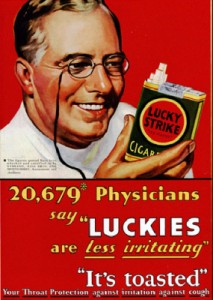Serious and Willful Claim Fails for Manager/Applicant
Happy Wednesday dear readers!
Your humble blogger likes to drop a dad joke here and there, but overall, there can be no dispute that when it comes to these blog posts, I am both serious… and willful. So, who better to bring you a blog post about Labor Code 4553 and the allegations of Serious and Willful Misconduct?
The case is that of Perez (deceased) v. Dynamic Auto Images, Inc., wherein the deceased’s dependents claimed the employer engaged in Serious and Willful Misconduct by the employer following the employee’s tragic fall to his death. The case-in-chief was resolved via C&R.
According to the OSHA report, the employee fell twelve feet from a carport on which he was working, landing on his head. At trial, the defense witness, the business manager, testified that the employee had access to resources to purchase or rent any safety equipment necessary to do a particular job, and that he also worked relatively independently, having general duties without specific instruction on how any particular task needed to be done. On the job where the fall occurred, a particular location was being closed by the employer and he was engaged in dismantling the carport and removing fixtures.
Although the employee rented, on his own, a seven-foot truck to get the job done, the employer witness did not know why the employee did not also rent safety equipment. OSHA had initially fined the employer $58,000 based on safety violations, but, following an appeal, the fine was reduced to $21,000. The OSHA resolution included a common clause regarding denial of any negligence, fault, or wrongdoing on the part of the employer, and there was no finding by a trier-of-fact as to any of the same.
The WCJ, at trial, found that the employee’s dependents failed to carry their burden of proof in establishing Serious and Willful misconduct. First, the dependents failed to identify “which executive, managing partner or general superintendent (other than the decendent himself) engaged in conduct that is fairly described” to constitute a deliberate act for the purpose of injuring another, an intentional act with knowledge that serious injury is a probable result, or an intentional act with a positive and reckless disregard for the safety of another. Since the employee was an “executive, managing partner or general superintendent” himself, there is no authority for a duty of the other executives, managing partners, or general superintendents in the company to make sure the employee, who was relatively autonomous in his job duties, did the job safely.
Likewise, proceeding on a theory that the employer knowingly violated an OSHA safety order, the claim would likewise fail, since there was no evidence that anyone else in the management team knew how the employee would carry out the task of removing fixtures from the car port, let alone that the employee would choose to do so in an unsafe manner, given the resources available and the autonomy in which he worked.
The WCAB denied reconsideration and incorporated and adopted the WCJ’s report on reconsideration.
If you have an S&W case, I strongly recommend reading the WCJ’s report on reconsideration. The WCJ gave a thorough and nuanced discussion of S&W law in general, and how it applied to a variety of cases.
Basically, the facts are strongly suggestive of the fact that it was an executive, managing partner, or general superintendent that engaged in serious and willful misconduct that resulted in his own tragic death. So that raises another question regarding the case-in-chief – could the insurer have petitioned the WCAB for a reduction in benefits due to the possible Serious and Willful Misconduct of the employee?
Well, Labor Code section 4551 allows for a 50% reduction in workers’ compensation benefits where the injury is the result of serious and willful misconduct of the injured employee, of course, but there are exceptions. One such exception, found in LC 4551(a) is where the S&W results in the employee’s death, which, it tragically did in this case.
Straight on to Friday, dear readers!
